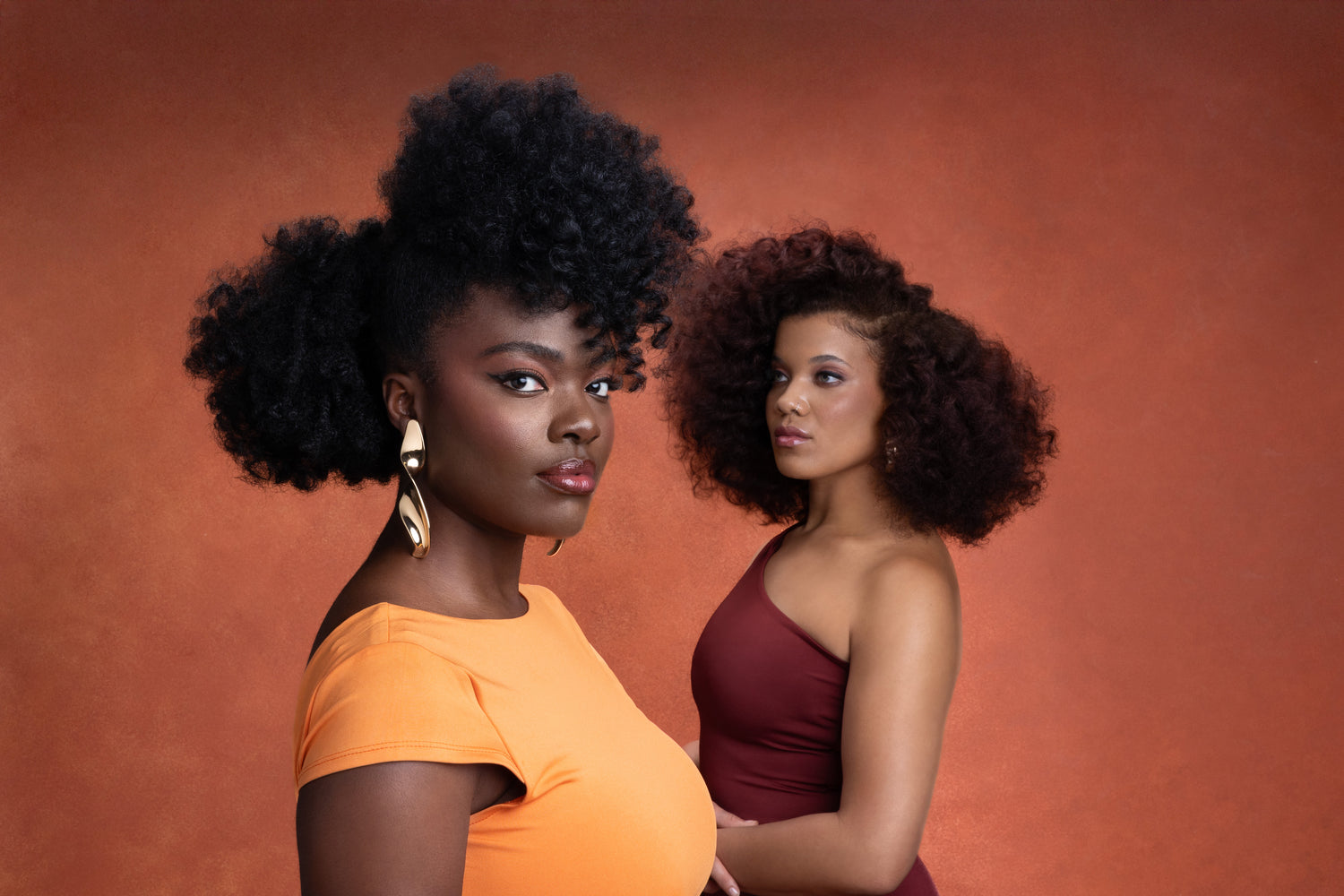Wondering: why is my hair so dry? No matter your hair length or type, dry hair is one of the most common hair complaints. Perhaps your hair is dry at the ends or always feels dry even though you regularly use conditioner. In this article, we’ll go through the most common causes of dry hair and what you can do to resolve and fix your dry hair woes.
The Weather
Wondering why your hair is so dry and brittle when it’s autumn/fall or winter? The drop in temperature and humidity can play havoc with your natural hair. So if you notice that your hair is getting drier during these transitional months but you haven’t made any changes to your routine, it’s probably due to the colder, drier weather which can strip your hair moisture and make it feel dry, brittle and dull.
You might also complain of hair that is dry and frizzy. This is because dryness often leads to frizz. When dry hair strands are exposed to humidity, the hair will take up some of the water in the air and swell up. This is what causes frizz.
Our favourite remedy for this is to make sure you counter weather-induced dryness by following the LOC and LCO methods. The acronym indicates the order by which the products (L = liquid O = oil and C = cream) should be applied to your hair. Using this method (with our Moisture Surge Set) after you’ve washed your hair will help you lock in moisture and fix dry hair.
Washing Your Hair (The Wrong Way)
We know that washing your hair frequently can dry it out. The reason your hair can become dry and brittle from over washing is because of hygral fatigue. This is a weakening of the hair caused by the repeated expansion and contraction of hair each time it is washed (the hair shaft expands as it fills with water and then contracts as it dries). Ultimately, hygral fatigue can result in dryness, breakage, weak hair and split ends – basically, everything we want to avoid!
One way to avoid hygral fatigue is by pre-treating your hair coconut oil before washing it with a good sulphate-free, natural shampoo, which is gentle enough to use every day. Coconut oil has been proven to protect hair by binding to the proteins in the hair shaft meaning that fewer water molecules can bind to the hair and less swelling happens.

Your Drying Method
Another way to look after your hair is by drying your hair quickly. This is because it minimises the opportunity for damage to the hair structure as your hair is at its weakest when it’s wet. Hair damage leads to dry, brittle hair that can be difficult to style. But that doesn’t mean you should reach for your hairdryer! We recommend steering clear of heat and using a microfibre towel turban to avoid any heat damage.
Not to mention, you want to avoid having wet hair outside as wet hair is a better culture medium for infections. So, avoid throwing your wet hair into bun or pineapple and dry your hair as much as you can before heading out.
Friction From Your Pillows
Cotton is super absorbent, so those fibres basically rob you of all the moisture that you’ve been working on locking into your hair. That’s why you might also wake up with dry, frizzy hair. So, upgrade your night routine and trade your cotton pillowcase for a satin or silk one as a remedy for dry natural hair. Or if you don’t want to mess up your bedroom decor, just wear a satin or silk bonnet or headscarf. This will help you retain moisture and reduce friction on your hair. So make sure that you’re sleeping with a protective bonnet/scarf or pillowcase.
Not 'Sealing In' Your Moisture
Your hair can be dry even if you use a moisturiser or leave-in conditioner every day. This is because water easily enters the hair, but it can also easily escape from the hair strand, especially if you live in a cold, low-humidity climate.
What’s the remedy for this hair dryness? Invest in a rich, moisture-locking oil like Seal. You can use it at the end of your routine (in the aforementioned LOC/LCO method) to 'seal' in all the hydrating goodness you just applied. Applying oil to hydrated hair slows down the rate at which water escapes from curly and coily strands and hence helps to fix hair dryness.
Heated Styling
Using heated styling tools such as straighteners, curling tongs and blow dryers can zap the moisture out of your hair (and not to mention lead to heat damage). Extreme heat damages the hair cuticle, making water escape from the hair strand much easier and leading to chronic hair dryness. We recommend going heat-free when it comes to drying, styling and stretching your hair, or using a blow dryer on the cool setting.
Chemical Treatments
Chemical processes like relaxing hair or colouring hair can leave your hair very brittle with an increased risk for breakage. Think about ditching or reducing these chemical treatments. There’s a wealth of information, here, about how to make caring for your natural hair easier, and the right products to use for it.
Editor’s tip: Thinking about transitioning? Our Newly Natural Set comes with everything needed for new naturalistas embarking on their natural hair journeys.
More Articles:
11 Common Hair Breakage Causes & Treatments

